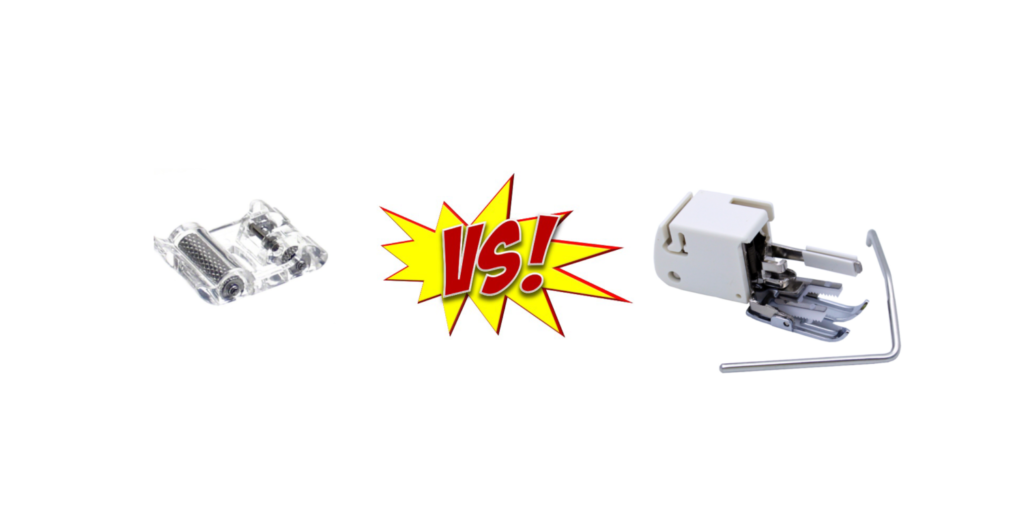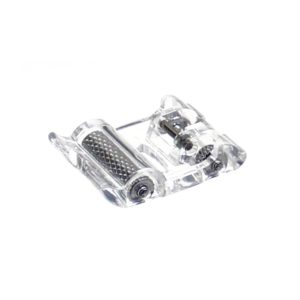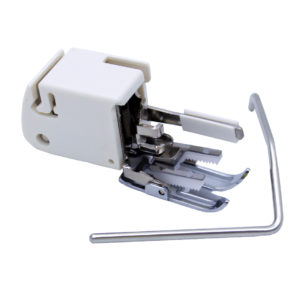Roller Foot VS. Walking Foot

Roller Foot/Walking Foot
The Roller foot is quite often an overlooked accessory for your sewing machine. I was introduced to it in the 1970’s—when I first learned to sew—and polyester double knits were the fashion. (I know, I just dated myself. Did I mention I learned to sew before I was born?)

Roller Foot
Some of the knits were slippery, and uneven seams were frustrating. During a class my mom took on sewing with knits, she purchased a roller foot. It made sewing delicate knits—as well as jacket knits, bottom weight knits, and wovens—feed superbly. Both Baby Lock and Janome have roller feet with a cross hatch imprinted into the metal to help grip and feed through your upper layer of fabric evenly.
I know what you’re thinking…Hey, feeding layers evenly is what a walking foot does. Well you’d be correct. Originally designed to match stripes and plaids, garment sewers and now quilters love the walking foot. It really helps feed all the layers through evenly.

Walking Foot
I use both feet. I find the roller foot works better for knits, velvet, leather and vinyl. (disclaimer – A Teflon or glide foot is also good for vinyl and leather, humidity can play a factor in these fabrics.) Some of our knits today are slippery, as well as very stretchy and some can be quite delicate. The roller foot gives that extra bit of control in feeding more than the standard zig zag foot. In addition, it also does not leave a harsh mark on plush fabrics like minky and velvet like a walking foot can.
When I am putting together several layers, like a quilt sandwich and I need a bit more power, I reach then for the walking foot. Overall, I tend to decide which foot to use by how bulky or heavy my project is.
Marlene Watts
Mo Sew North